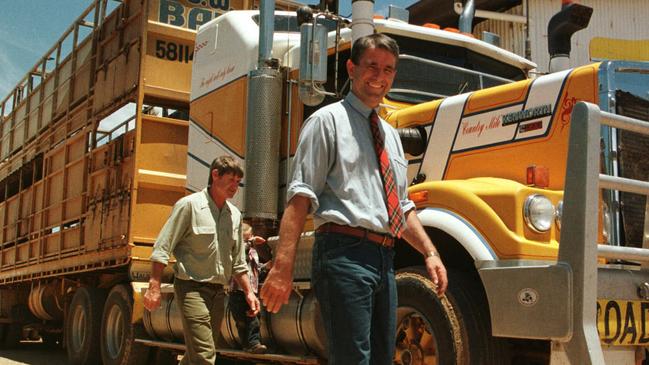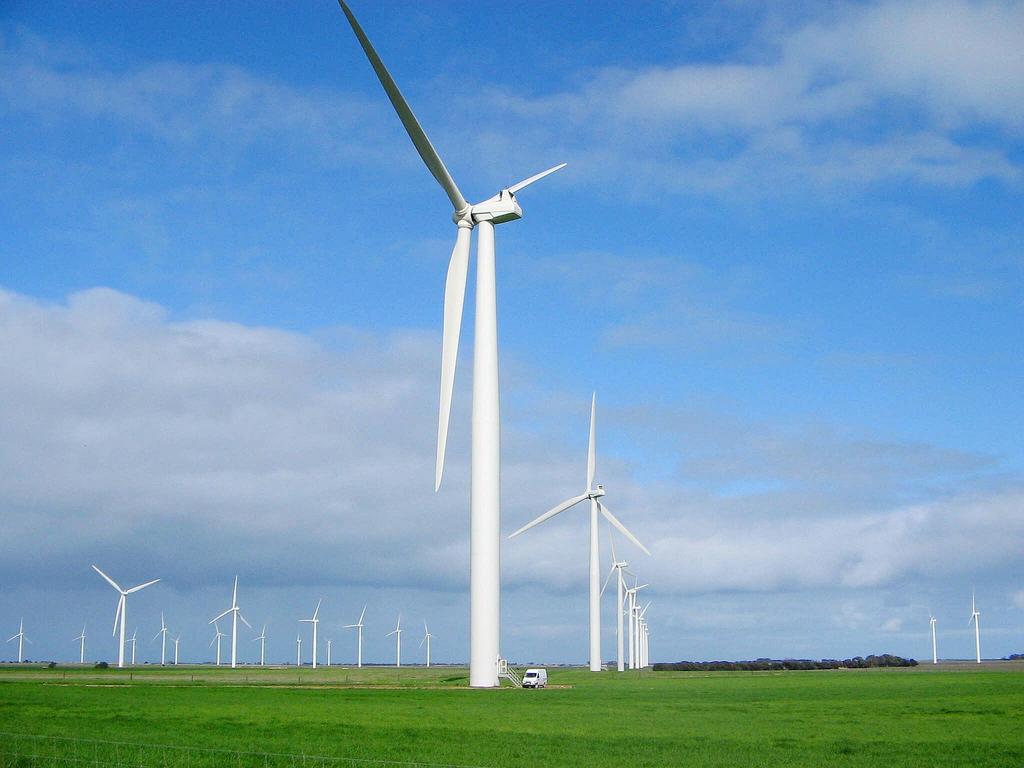How rail can haul Australia to a greener future: John Anderson
Former deputy prime minister John Anderson says ‘rail offers environmental and social benefits that road so far cannot’ but governments are yet to see the light.

Rail has the potential to haul Australia to a greener future as well as bolster national “sovereignty” on key freight routes, but is being hamstrung by “fragmented” government decisions, according to former deputy prime minister John Anderson.
In a speech at the Australian Centre for Rail Innovation on Monday, Mr Anderson criticised “fragmented” government policy, which reinforced views that rail is the “poor cousin” to road-based freight.
This was despite rail being more efficient and greener than heavy trucks and the coalition adopting a net-zero emissions by 2050 target. But Mr Anderson said government transport policy- which is now in Nationals leader Barnaby Joyce’s remit – was “not serving us as well as it could”.
“Policy attitudes towards freight are hugely fragmented. Different governments have a multitude of transport objectives and freight policy objectives – these don’t often align with broader transport, infrastructure or even social policy objectives,” Mr Anderson said.
“With road freight producing 16 times more carbon emissions than rail per tonne kilometre, and with one freight train carrying the equivalent of approximately 150 semi-trailers, the externality benefits of increasing the utilisation of rail could be substantial particularly for the community.
“Because these externalities are not consistently part of land transport policy considerations, the potential benefits are likely to be overlooked.”
Mr Anderson – who assumed the role of acting prime minister in the aftermath of September 11 when John Howard was overseas – is not the only former Nationals leader to call out the gulf between road and rail.
His predecessor, the late Tim Fischer, wrote in The Australian in 2019 that: “at both state and federal level, there has been a growing phenomenon of incompetence, leading to costly mistakes and the waste of millions of dollars with new infrastructure”.
Mr Anderson said an example of policy fragmentation was the movement towards the use of high productivity vehicles – which is a heavy vehicle combination that stretches more than 26 metres.
“While government policies designed to improve road productivity by harmonising standards and increasing the use of higher productivity vehicles have been effective, they have had also had the effect of increasing the attractiveness of road freight relative to rail.
“The cost benefit analysis of these policies fails to take into account their impact on mode choice, and the high externalities of road freight, where rail offers environmental and social benefits that road so far cannot.”
He criticised the government’s decision to freeze the heavy road user charge during the pandemic without offering similar support to rail.
This came as floods in South Australia shutdown the Trans-Australian Railway, which Mr Anderson said led to a dependency on “unreliable foreign flagged vessels” and “price gouging” from road-based freight providers.
“Completely different pricing frameworks apply for road access charges and rail access charges, with long held concerns that heavy vehicles do not pay the full cost that they impose on our road system, effectively discriminating against rail.
“Most recently, we’ve seen previous government decisions to freeze the heavy road user charge. Rail access charges don’t attract the same benefits.
“The resilience and productivity of our rail freight network has national sovereignty considerations.”
Mr Anderson said a lack of investment in rail across the Murray Darling basin region had accelerated the switch to road-based transport, which was now hard to shake.
“Although the investments have now been made by governments, the shift to road remains and is proving difficult to change.
“But infrastructure deficits aren’t just limited to physical infrastructure – they can also encompass operating systems and communication networks. Unlike road, air and even sea freight, our rail services do not yet have access to digital technology that allows customers to track the movement of their freight in real time.”
Also hindering rail’s appeal is its “clunky” nature – unlike road, which Mr Anderson said can offer a “bespoke door-to-door solution”.
“Rail has consistently faced barriers to the improvement of transit times, whereas in recent times the opposite has been true for road as a result of improved road infrastructure. Plus, rail involves a more complex transport movement – the requirement for containerisation and pick up and delivery adds to the hassle factor of rail.
“Rail must offer a lower price to compensate for the limitations affecting its services, and can only effectively compete with road where it attracts sufficient volume of freight in order to take advantage of its scale economies.”
Ultimately, he said without clear government policies aimed and boosting the appeal of rail, Australian consumers will be the losers.
“Road is often regarded as a superior, seamless transport solution, while rail, the poor cousin, is viewed as clunky or inflexible. This mindset only serves to undermine efficiency in the industry and needs to be thoroughly tested.
“Without rail doing more of the heavy lifting, Australians ultimately bear the costs of less efficient freight networks and increased prevalence of trucks on our major roads and highways.”







To join the conversation, please log in. Don't have an account? Register
Join the conversation, you are commenting as Logout